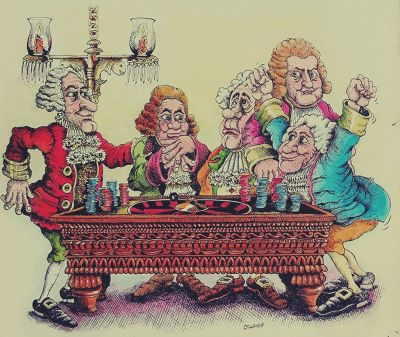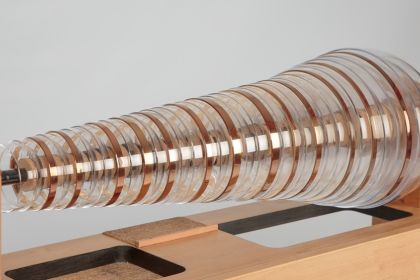ORCHESTRA
Pachelbel's Canon: the harmonic sequence that flooded pop music

Greatest Hits Of 1700s LP cover
Pachelbel's Canon, also known as Canon and Gigue in D, is the best-known piece by German composer Johann Pachelbel which he most likely composed for the wedding ceremony of Johann Christoph Bach. Written in the middle of the Baroque era, the piece was not published or performed for several centuries until the 1968 recording by French conductor Jean-François Paillard burst onto the airplay with the staying power that would rival contemporary pop hits.
The reason for such widespread popularity of Pachelbel's Canon apparently lies in the simple compositional technique of looping chord progression that remains unchanged throughout the piece. Such a minimalistic harmonic structure of a composition is rarely seen in classical music but is quite common in songwriting.
The looping chain of eight chords found in Pachelbel's Canon is a typical example of a so-called harmonic sequence where a certain musical turnaround is repeated in a modified form involving different scale degrees.
Listen to Pachelbel's Canon performed by Orchestre de Chambre Jean-François Paillard:
In the harmonic analysis of Pachelbel's Canon chord chain, the scale degrees (denoted with Roman numerals) show the following progressions in D Ionian: D–A–Bm–F♯m–G–D–G–A or I–V–vi–iii–IV–I–IV–V.
Here the segment of the sequence is formed by two chords I–V whose roots are spaced from each other by a perfect fifth. This segment is repeated at the sixth (vi–iii) and fourth (IV–I) degrees of the Ionian scale, after which the strongest classical cadence I–IV–V is performed to juxtapose all three harmonic functions of the tonic, subdominant, and dominant. This half cadence generates a strong expectation of the D tonic chord, which appears at the beginning of the next eight-chord cycle.
After the impressive success of Paillard's version, the eight-chord progression got on the songwriters' radar, after which they proceeded to stamp out tons of songs based on this harmonic sequence. Here is a harmonic analysis of four tracks from an extensive list of songs using Pachebel's harmonic sequence:
- Memories by Maroon 5 in B Ionian B–F♯–G♯m–D♯m–E–B–E–F♯ or I–V–vi–iii–IV–I–IV–V;
- Rain And Tears by Aphrodite's Child in Bb Ionian B♭m–F–Gm–Dm–E♭–B♭–E♭–F or I–V–vi–iii–IV–I–IV–V;
- Streets Of London by Ralph McTell in D Ionian:D–A–Bm–F♯m–G–D–Em–A or I–V–vi–iii–IV–I–ii–V;
- Go West by Pet Shop Boys in C Ionian C–G–Am–Em–F–C–Dm–G or I–V–vi–iii–IV–I–ii–V.
Note that the first two tracks reveal Pachebel's sequence in its original form, while the bottom pair of songs contains a variation of the ending cadence involving the supertonic minor chord ii–V.



